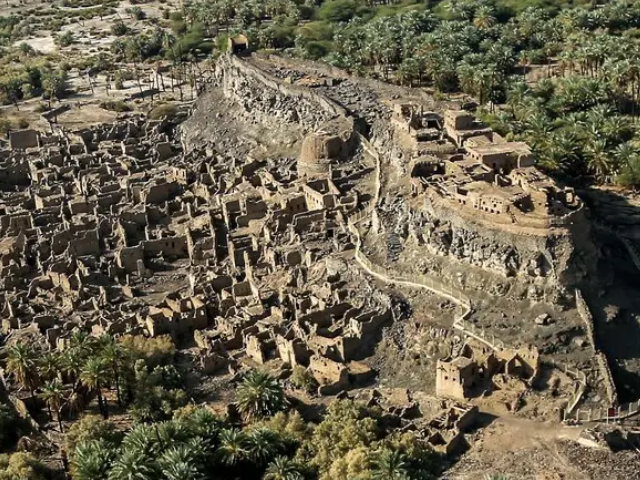JEDDAH: Archaeologists have uncovered a 4,000-year-old fortified town in Saudi Arabia’s Khaybar Oasis, offering fresh insights into the region’s transition from nomadic to urban life.
The town, called al-Natah, dates back to around 2400 BC and reflects early signs of organized living and social structure. Enclosed within a walled oasis, al-Natah is seen as a key example of gradual urbanization in northwest Arabia, where fortified towns facilitated interactions among pastoral communities.
The Royal Commission for AlUla collaborated with the French Agency for AlUla Development (AFALULA) and the French National Centre for Scientific Research (CNRS) on the project, recently published in PLOS One. The findings highlight a 2.6-hectare settlement capable of housing an estimated 500 people, serving as a central hub within a network of fortified towns in the area.
Guillaume Charloux, lead archaeologist, described al-Natah as an example of “slow urbanism,” with community-focused development replacing the region’s nomadic lifestyle. Unlike the grand cities of Egypt or Mesopotamia, al-Natah’s layout adapted to the desert, focusing on small-scale urban organization.
Located in the volcanic Harrat Khaybar field, al-Natah lies at a crossroads of three valleys in an arid landscape, with its ruins preserved beneath basalt rock for thousands of years. A 14.5-kilometre wall surrounded the town, suggesting it was built for protection from nomadic incursions. Researchers have identified residential zones, communal areas, and a necropolis, indicating a well-organized community structure.
Satellite images and excavations at al-Natah reveal extensive planning, with house foundations and pathways pointing to a structured layout. Stone foundations capable of supporting multi-story structures suggest that buildings likely served diverse purposes, including housing, crop storage, and animal husbandry.
Artifacts recovered from the site, including pottery, grinding stones, and metal tools, provide a glimpse into the lives of al-Natah’s residents. The presence of stepped tower tombs in the necropolis hints at metalworking skills and possible trade links extending beyond Khaybar.
The study suggests that al-Natah and similar oases may have helped establish early trade routes, connecting the Arabian Peninsula to distant markets. Archaeologists speculate that the town could have been part of the Arabian incense route, which transported goods like frankincense across the region.
Al-Natah appears to have been abandoned between 1500 and 1300 BC, possibly due to environmental shifts or declining resources. The exact reasons remain unclear, leaving the site with an enduring sense of mystery.
Historians have praised the discovery, noting its importance for understanding early urbanization in northwest Arabia. Historian Juan Manuel Tebes highlighted the Khaybar project’s role in reconstructing social evolution timelines in the region, while Qatar Museums’ archaeologist Robert Andrew Carter emphasized its unique perspective on the Arabian Bronze Age.
Despite its modest scale compared to ancient Levantine or Mesopotamian cities, al-Natah offers a rare view of early desert societies adapting to urban life. Excavations at the site will continue as researchers seek to uncover more details about the community’s customs, daily lives, and ultimate fate.























